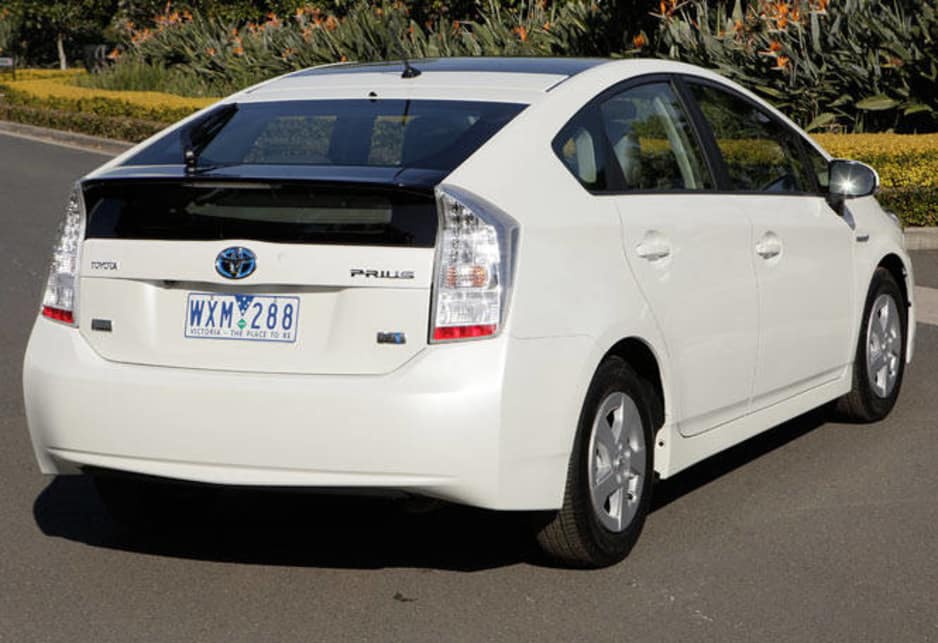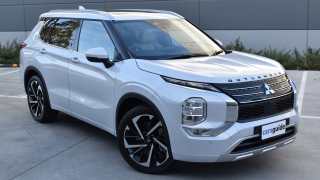
Toyota Prius vs Mini D 2009 review
- Mini Cooper
- Toyota Prius
- Mini Cooper 2009
- Toyota Prius 2009
- Mini Cooper Reviews
- Toyota Prius Reviews
- Mini Reviews
- Toyota Reviews
- Mini Hatchback Range
- Toyota Hatchback Range
- Hatchback
- Mini
- Toyota
- EV
- Comparison

Hybrid or diesel? It's one of the burning questions of 2009. Rival carmakers each claim to have the perfect answer to the green question of the new millennium, but they can’t both be right when one is trumpeting the economy and efficiency of diesel and the other says a petrol-electric hybrid is the only way forward. So we put them to the test.
The contestants
We lined the latest Mini Diesel up against the all-new Toyota Prius and put them through their hoops in the real-world disaster zone of commuter travel.
To keep thirst and belch low, the Prius relies on switching over to its electric motor – partly charged by capturing regenerative braking power – whenever practical, while the Mini uses an efficient diesel system and stop-start technology that switches off the engine when you’re stationary. And they both do impressive figures on a test cycle.
The Prius III’s 1.8-litre engine claims official figures of 3.9L/100km for urban and combined driving, and 3.7l for highway running, with emissions pegged at 89gm/km of CO2.
Mini D carries a 1.5-litre diesel engine that also posts an official figure of 3.9l/100km combined - rising to 4.7l in city driving and dropping to 3.5l for the highway - but emits 104gm/km,
But a laboratory test is a long way from the stop-start grind of an average Australian workday run. So how would they perform in a series of nightmare commuter runs through Sydney’s peak hour traffic into the CBD? We asked two colleagues to do a couple of commutes in each car, driving in their normal manner, restricting their trips to the work runs and noting their fuel consumption and impressions.
Northern trips
From Narabeen, Simon Fuller has a commute of about 35km, and takes just over an hour to cover it on average. The two round trips he did in the Prius through morning and afternoon peak hours resulted in an average fuel consumption of 4.6L/100km. Being totally city driving, that’s naturally a bit above the official combined figure, but a fairly economical result for peak hour travel.
The same trips in the Mini came in at 4.9l/100km - just 0.2l above the car’s claimed city figure, but with the higher price of diesel a more expensive commute.
Southern trips
From Oyster Bay, Brett Houldin also travels about 35km and takes just over an hour. His two round trips in the Prius resulted in an average fuel consumption of 4.5L/100km, while his Mini consumption finished at 5.3l. So it seems the Toyota hybrid can ward off the bowser challenge from the Mini diesel. But if you’re going to spend long hours in a car, a great fuel figure is not the whole picture.
Fuller on the Prius
City driving at any time around peak hour means that there is plenty of stopping and starting in your drive. The Prius’ sluggish take-off but sensitive brakes made this an interesting practice, but this wasn’t too hard to adapt to. And once the car is moving, it has no problem getting up to the required speed. The steering was a pleasure and the turning circle was impressive.
But when the electric motor is in control on slow-speed inclines-such exit ramps out of car parks - there is a tendency for the Prius to stop and roll backwards. I learned to put my foot down on the accelerator a lot harder than would feel comfortable in most cars.
However I liked the radar cruise control. I didn’t have to brake or accelerate as the speed of the car in front changed. The radar would detect the Prius getting closer to the car in front, brake, and then resume speed once there was sufficient room again. Not sure how much I trust a computer-driven car, but it certainly was fun.
As was the parallel park assist function. Once you have lined up a spot to park in, all you have to do is brake as it reverses and steers for you. For many people, the excellent fuel consumption might make it a significant factor in their car choice. If these were priced in a lower price range, I think they would be a lot more appealing.
Overall, the Prius was roomy, reasonably powered, and feature packed. But there was no sense of pleasure in the driving. It lacked the feel that a keen driver would be looking for.
Houldin on the Prius
It’s small and sleek, but powerless. My first reaction - a lawn mower. It was hard to adjust to such a different car from my usual V8 offroader, and that was obvious each time I took off from the lights. But once you got up to around 30km/h, the car was very comfortable and enjoyable to drive around the city, manoeuvrable and easy to control.
I enjoyed the positioning of various buttons and the ease of driving. Having the odometer in the middle was at first annoying till I used the illuminated ‘heads-up’ display - this is a fantastic addition. My biggest complaint was the location of the back spoiler. It seemed to be in the way every time I wanted to look through the rear-view mirror. But overall, a good city car and very economical, so it suits its purpose.
Fuller on the Mini
I was surprised at the spaciousness of the cabin, and felt an immediate sense of excitement at the interior-bucket seats, retro-styled gauges, aircraft-like control switches, two-panel sunroof … it looked like this car had it all.
The engine has the hollow burbling noise familiar with diesel engines, but with the doors closed and windows up, you'd have no idea it wasn’t a petrol motor, until you use the accelerator. The distinct difference is the torque that this little beast has to offer compared to a similar sized petrol powerplant. It's definitely not lacking.
The clutch and gearbox feel solid and are both easy to adapt to and very smooth. Gear ratios probably couldn't be much closer to perfect either. The steering is firm, and it handles well. There was an initial abrupt reminder that the engine switches off when stationary after you shift into neutral. Not yet trusting the system, I just touched the clutch pedal and the engine fired back up, and very quickly too.
The Mini also coped well with a peak-hour commuter’s dread in a manual-stretches of stop-start-crawl on a twisty uphill road. The Mini makes this a piece of cake, with the hill-hold feature kicking in every time you come to a rest while facing uphill, making take-offs so easy and never needing the handbrake. And it used just under half the fuel of my regular vehicle, a turbo four-cylinder Mazda.
Houldin on the Mini
The manual is annoying in heavy traffic, especially when it turns off during idle. I found the suggested gear change interesting, mostly because it suggested changing before 2000rpm-this is obviously how they claim such low consumption. Very rarely did I get it into sixth gear around town even when it suggested it at 70km/h.
But this car is really fun with a go-cart feel. It sounds like many other diesel engines - and this one was similar to an old Herbie. There is plenty of power for a small car and it’s very zippy around the city, but you tend to not focus on how fast you’re going when the gauge is in the middle of the dash. And the mesh cover on the sunroof is basically useless. It should have been solid.
But overall it handles very well and you’d recommend it to anyone looking for some basic thrills with minimal running costs.
Fuller’s choice
The Mini for sure, because although it has great economy and is better for the environment than most cars, it manages to not compromise the driving experience, and still has plenty of power to boot. It's got better visibility and not so many features that I probably wouldn't end up using, like the parking assist.
Houldin’s choice
I’d buy the Prius, mainly because I know my wife loved it and it’s the type of car she would drive more than me. It had some awesome techno features that were equivalent to a top of the market car. But if I wanted a car just to fang around in, no question - the Mini.
Toyota Prius
Price: From $39,900 (Prius) to $53,500 (Prius i-Tech) plus on-road costs
Engine: 1.8-litre four-cylinder petrol plus electric motor
Outputs: 73kW at 5200rpm and 142Nm at 4000rpm (engine); 60kW (motor); net power 100kW
Transmission: Continuously variable transmission, front-wheel drive
Economy (official): 3.9l/100km combined and urban, 3.7l/100km highway
Economy (on test): 4.5l/100km urban, averaged
Mini Cooper D
Price: From $33,750 plus on-road costs
Engine: 1.6-litre four-cylinder diesel
Output: 80kW at 4000rpm and 240Nm at 1750rpm
Transmissions: Six-speed manual or automatic, front-wheel drive
Economy (official): 3.9l/100km combined, 3.5l/100km highway, 4.7l/100km urban
Economy (on test): 5.1/100km urban, averaged
$9,999 - $19,990
Based on 10 car listings in the last 6 months
$9,999 - $19,990
Based on 10 car listings in the last 6 months







